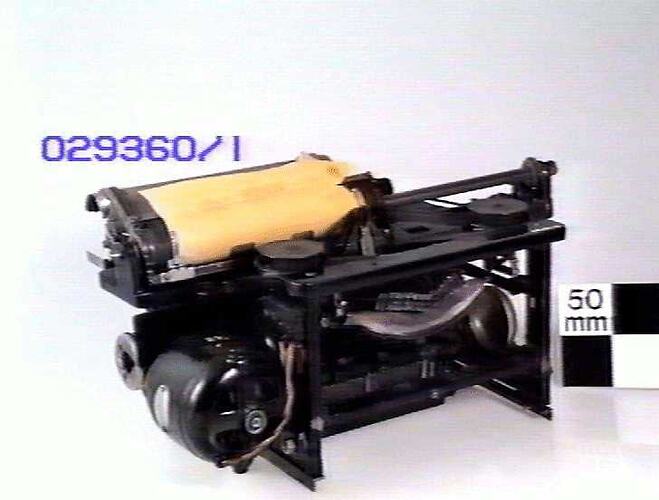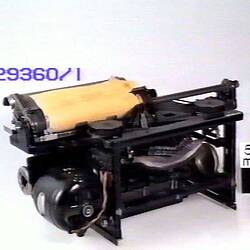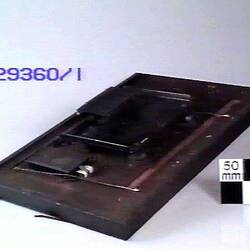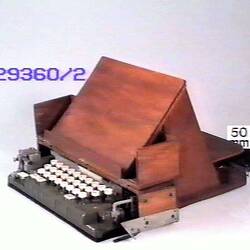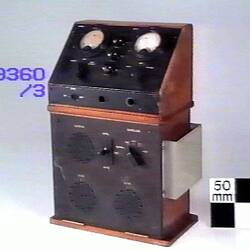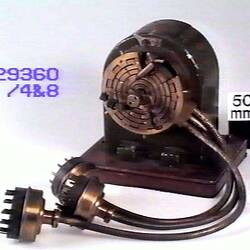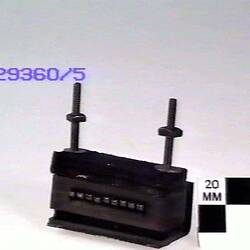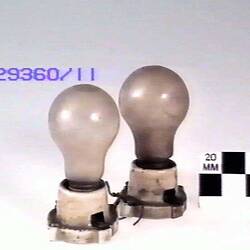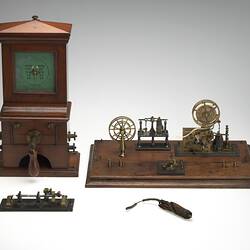Summary
Telegraph Multiplex System in separate parts including printer, paper tape punch, control switch box, distributor motor, terminal block, Creed relay, vibrator, distributor, meters, paper tape readers and lamps.
From inscriptions on some of the parts, it is believed that this device was in operation until at least 1952.
The Murray Multiplex system was developed from the earlier French Baudot system by Donald Murray, a New Zealander, with the aim of increasing the capacity and ease of use of telegraph systems. The Murray Multiplex was first used in Australia in the 1920s. It allowed up to eight messages to be sent almost simultaneously along a single telegraph line. Messages for transmission could be typed on a standard keyboard, and received messges were printed out as text. Thus the Murray Multiplex substatntially increased the capacity of the telegraph system and eliminated the need for operators to use morse code.
In the Murray system, each of up to eight transmitters was connected in sequence to the telegraph line, using a device called a distributor. At the other end of the line, another distributor connected each receiver in sequence, with the connections being carefully synchronised to ensure that each transmitter was connected only to its corresponding receiver. Thus a message from a particular transmitter would be split into pieces ('packets' in modern telecommunications technology) and each piece would be sent along the line while that transmitter was connected to its corresponding receiver. The next piece would be transmitted when the transmitter and receiver were next connected and so on until the entire message was transmitted. The system would then reassemble the pieces and print out the complete message.
The Murray system used perforated paper tape as the means of converting messages to and from the stream of electric current pulses flowing along the telegraph line. At the transmitting end, an operator typed a message on a keyboard. A perforator converted each typed character into a pattern of up to six holes punched across the width of a strip of paper tape. The tape passed to the transmitter which, when connected to the telegraph line by the distributor, converted the hole pattern into a stream of electrical pulses which were fed to the line. At the receiving end the pulses were directed by the distributor to the appropriate receiver for printing. In addition, the received pulses could be used in a reperforator to produce another punched tape for onward transmission if required.
The code used by Murray to represent characters as holes punched in paper tape was a development of that used by Baudot. The Murray code represented the most-used characters by the least number of holes, thus reducing the wear and tear on the tape perforating machines.
Physical Description
Telegraph Multiplex System in separate parts including printer, paper tape punch, control switch box, distributor motor, terminal block, Creed relay, vibrator, distributor, meters, paper tape readers and lamps.
More Information
-
Collection Names
-
Collecting Areas
-
Acquisition Information
Purchase
-
Classification
-
Category
-
Discipline
-
Type of item
-
Overall Dimensions
160 mm (Length), 360 mm (Width), 80 mm (Height), 5.5 kg (Weight)
-
Keywords
